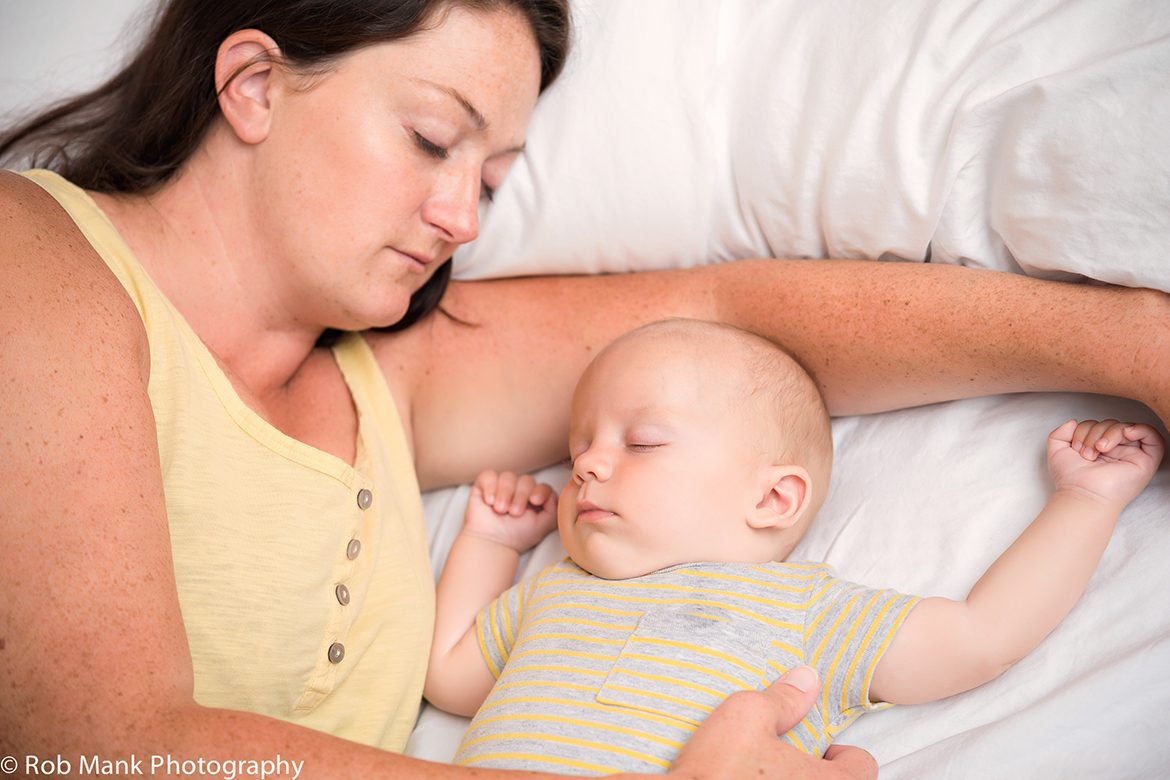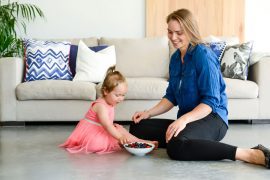By Sasha Romary
Weeks before our baby boy was born I had set up and decorated his crib, eager and ready to put our happily sleeping newborn in the cosy space I had created for him. After a difficult and very long birth, I held my perfect, sleeping baby in my hospital room and gently placed him into the plastic cot next to my bed, ready to get a few hours of shut-eye myself. The minute I closed my eyes, however, my tiny little boy let out a cry that ripped my heart in two. I quickly pulled him back into my arms, wedged him in between the nursing pillow and both of us dozed in and out of sleep for the rest of the night. Suddenly, the cosy crib that I had set up for him seemed huge and cold and it just felt right to have him cuddled up with me. Even after all I read about safe sleep habits and the dangers of SIDS (Sudden Infant Death Syndrome), having my son in my arms seemed to be the only way that any of us were getting any sleep. Sound familiar?
For the record, I don’t think that the method of co-sleeping that we practised for the first week or so was the safest and I would strongly suggest against sleeping with your baby on your chest. I was not prepared for the situation in which I found myself and was desperate to get a few hours of sleep. This sleep solution didn’t work for us and we eventually transferred him to a bassinet just next to our bed until he was about 4 months old.
Co-sleeping, or more specifically, bed-sharing, is a rather hot topic in the world of parenting philosophies as many worry that it will ruin your relationship with your partner, that you are creating an overly dependent, spoiled baby, and most importantly, that there is a high risk of suffocation. This is hard to argue when organisations like the American Academy of Paediatrics (AAP) state that letting your baby sleep in your bed greatly increases the risk of SIDS.
Co-sleeping, however, doesn’t have to mean bed-sharing. Essentially, co-sleeping is any arrangement in which the baby sleeps in close proximity to the mother, whether this means that the baby sleeps in the bed with her, in a co-sleeper attached at one side to the mother’s bed, a bassinet where baby is at arm’s reach from Mama or in their own bed in the same room. Whatever the configuration, remember that no one knows your baby better than you and what you believe is right for your family might be very different from what others choose and that is more than OK.
There are many benefits of co-sleeping and it can be safe and a lovely way to bond with your new baby and get some sleep in the first few weeks. If practised correctly:
1. Co-sleeping can benefit both mom and baby
Sleeping in close proximity to your baby could actually be a way of reducing SIDS. Your baby biologically syncs his breath patterns to yours if he is close enough. This could actually promote stable and healthy breathing habits in your newborn. Newborns also regulate their temperature to their mothers and are warmer when sleeping next to you, reducing the risk of overheating or any significant drop in body temperature.
Additionally, newborns often give off cues and signals when something is not right. A mother within arm’s reach to her baby will be able to sense and notice these issues before they become life-threatening, effectively reducing the risk of SIDS.
2. Co-sleeping is natural
In the early weeks after birth, babies require the smell of their mother, touch, sounds and movement in order to feel secure. It is impossible to give a baby too much contact or affection and studies have shown that without these sensations a baby will revert to their primary survival response of crying, therefore producing the stress hormone, cortisol, in an attempt to get their mother’s attention. Co-sleeping is the embodiment of our human need for infant-parent closeness and a baby who sleeps in proximity to their parents is reassured by the continual reminders of their presence.











